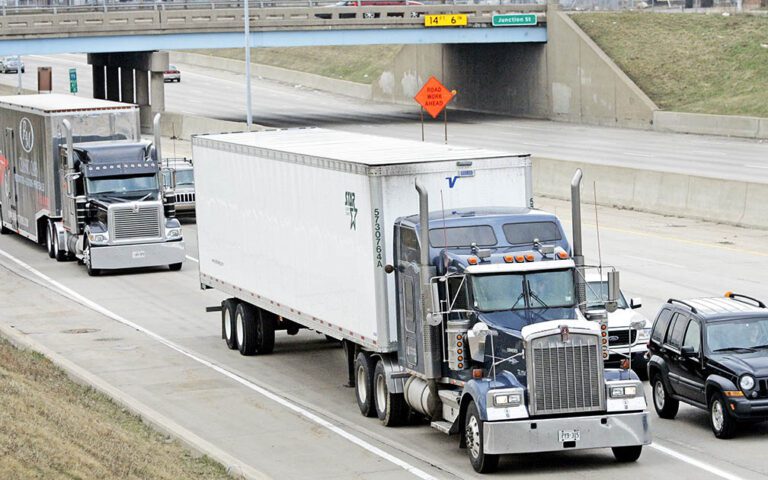LOS ANGELES — The operational shutdown of Yellow Corp. should help prop up industry rates that tumbled after the cargo bubble of the early coronavirus pandemic deflated last year, transportation analysts said.
The company, formerly known as YRC, is one of the nation’s largest so-called “less-than-truck load” carriers with customers that include Walmart and Home Depot. It notified customers that it stopped operations on Sunday and warned the Teamsters union, which represents 22,000 of its 30,000 employees, that it plans to file for bankruptcy.
Yellow’s demise underscores the shift in the U.S. trucking industry from too few trucks and truck drivers during the pandemic to too many today.
Most U.S. trucking companies have about 20% spare capacity in their networks, Stifel analyst Bruce Chan said in a client note on Monday.
Yellow’s exit could remove about 10% of capacity from the segment, he said, adding that it “should be a universal boon to remaining carriers.”
The failure of Yellow, best know for its business that combines shipments for multiple customers into one truckload, should benefit rivals including Forward Air, ArcBest, TFI International, XPO, FedEx Freight, Saia and Old Dominion, Chan and other analysts said.
Yellow struggled for more than a decade after loading up on debt from acquisitions of rival trucking firms Roadway and USF.
It failed to integrate overlapping networks and became known as a discount carrier due to its below-market rates and service levels, Stifel’s Chan said.
“The company is deeply distressed, and would require monumental operational overhaul as a going concern,” Chan said. In 2020, then-U.S. President Donald Trump bailed out the company with a $700 million pandemic relief loan.
The company has not significantly repaid that federal loan, which is part of $1.2 billion in debt it is scrambling to refinance before it comes due next year. Yellow’s other lenders include a group led by Apollo Global Management.
It appealed to the Teamsters to help it cut costs, only to be rebuffed by the union, whose leader said: “Following years of worker give backs, federal loans and other bail outs, this deadbeat company has only itself to blame.”
Yellow’s failure has a low risk of disrupting U.S. trucking markets because the industry has time to work out any kinks before the all-important winter holiday peak season, analysts said.
Still, it is not good news for Yellow’s customers, which likely will face double-digit price increases when they turn that business over to companies, Chan said.
Many of Yellow’s former customers have starting the time-consuming process of shifting their cargo to different firms, while some have goods stranded in its network, said Ken Adamo, chief of analytics at DAT Freight & Analytics.
“If you weren’t prepared for this, it’s probably a pretty tough day for you,” Adamo said of Yellow’s customers.
White House economic adviser Jared Bernstein on Monday, July 31, said the reported impending bankruptcy of cash-strapped U.S. trucking company Yellow Corp does not indicate an economy-wide problem.
The company, through a string of mergers, appeared to take on more debt than it could handle, Jared Bernstein of the Council of Economic Advisers, said in an interview with CNBC.
“So I think that this looks like a more of a Yellow story than an economy-wide one by a long shot,” Bernstein said.
Yellow Corp has ceased operations and is filing for bankruptcy after failing to reorganize and refinance over a billion dollars in debt, the Teamsters Union said on Sunday.
Earlier this month, Yellow averted a threatened strike by 22,000 Teamsters-represented workers and last week said it was exploring opportunities to divest its third-party logistics company.
The company was the third-biggest U.S. trucker specializing in the less-than-truckload segment that combines shipments from different customers in the same trailer.
“One of the important things in terms of economic functioning from where I sit kind of overlooking the macro economy is that many of Yellow’s customers saw this coming and shifted their cargo to other providers,” Bernstein said. “Nobody likes to see an event like this, as you say, practically a 100-year old company and iconic American Trucking Company and the job losses that you cited.”














